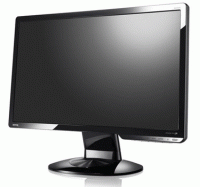Let's try a different approach. It's not something that I would normally suggest due to adware issues, but let's try to see if this helps. Be extremely careful, as you can inadvertently install unwanted software.
- Please read the following carefully, before continuing:
- Download Driver Booster 2 here. Click on "Free Download". Click on the big green "Download Now" button. This should download the software.
- Double click on the driver_booster_setup.exe file to start with the install process.
- Make sure to uncheck the "Yes, install Advanced SystemCare Free", then click the big red "Accept and Install" button.
- Driver Booster will now automatically begin to run, however your setup is not done yet.
- Go back to the installer, wait for it to show a screen which says: "Subscribe to IObit newsletter and you will get:" with a big red Subscribe button. Do not click on that. Click on the "Give up my gift" link. Then click the big red Finish button.
- Now, wait for the scan to be completed.
- Please list all drivers that it asks you to upgrade, here.
- I usually click on the "Update All" button on top, however, please remember that some driver updates might cause issues with your system, so doing that is at your risk. If you just want to be safe, post the list of drivers it asks to update, and we'll try to help you get your issue fixed.























 Sign In
Sign In Create Account
Create Account

